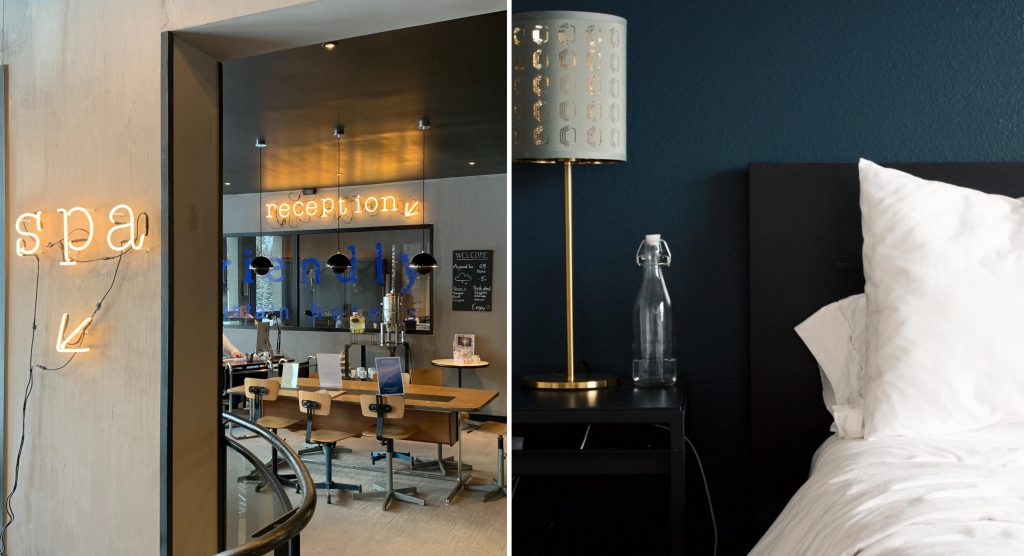
Back To Business: How Nashville communicators are helping our local economy open safely
By Kellie Davie, APR
It has now been nearly three months since the COVID-19 pandemic put a standstill on most businesses in our area and in the country. We are now starting to see a progression of businesses reopening, thanks to Nashville Mayor John Cooper announcing that we are in Phase 2 of the city’s “Roadmap for Reopening Nashville” plan on Memorial Day. Phase 2 allows restaurants and some businesses to open at 75% capacity and bring live music back to restaurants and bars. Salons, gyms, and attractions are allowed to open at 50% capacity, and gatherings of 25 people or less will be allowed.
The pandemic has changed the way businesses manage communications to stakeholders, with a constant ebb and flow of messaging taking place as new updates on the virus develop. IABC Nashville asked three of Nashville’s most seasoned business communicators what they are doing to maintain clear, concise, and consistent messaging.

Marcia is the CEO of Roar Nashville, one of Nashville’s leading communications, creative agencies. She is also Founder & Managing Partner of Nashville Fashion Week, Founder & Executive Director of Tiny But Mighty Fund.
Marcia Masulla, Chief Executive Officer, ROAR Nashville
What types of communications have your clients been sending out to their audiences? Emails are still happening regularly but social media communication has become more frequent so that we can clearly communicate changes in procedures, new business hours, and other pertinent information that should be updated as progress develops.
How have your clients adjusted their crisis communications strategies during the pandemic? During a time of information and anxiety overload, I have worked with my clients to communicate concisely yet while also leading with a positive voice. Transparency has also been key. There’s no need to exude that you have it all figured out when there is so much that is unknown. I believe that the best thing we can do for one another is to be clear, direct, and comforting.
What is the most significant piece of advice you would give clients on a successful reopening strategy? Safety and science first. While it’s tempting to want to do what others within your same city or industry are doing, you should follow the (evolving) facts and follow your own gut.
What do communicators need to be aware of to distribute effect communications, and not get lost in the COVID-19 messaging shuffle? I’ll go back to what I said above about being clear, direct, and comforting. The last thing anyone needs right now is another complicated or lengthy thing to process.
What can we, as a community, do to help businesses like your clients during the reopening phase? Continue to support independent businesses by taking responsible actions like wearing masks, social distancing, and by opting to do curbside pickup, delivery, or online shopping. Also, if you are in a position to give and support, please consider making a donation to TN Action for Hospitality which has an assistance fund at the Community Foundation of Middle Tennessee. We have issued out nearly 150 funds of $1000 to workers who work for independent hospitality businesses in Tennessee. There are still hundreds waiting who applied from our first round of applications but we need to raise more funds to be able to continue helping!

ROAR Nashville clients AVO and The BE-Hive, two of Nashville’s most prominent vegan restaurants, have been taking extra precautions to ensure employees and patrons are safe and satisfied within their establishments.

Janet is President & CEO, Kurtz Hospitality Marketing, a hospitality consulting firm, specializing in Hotel and Restaurant Consulting, Sales & Marketing, Management, and Business Development. Janet brings 22 years of sales, marketing communications, and revenue management experience to her clients.
Janet Kurtz, President, Kurtz Hospitality Marketing
How have your hospitality clients adjusted during this period?
Many of our clients are just starting to come back to work after the Safer At Home orders have been lifted. However, during the periods of closure or, in the case of hotels, low occupancy, our clients have used this time to reflect on operations best practices, marketing strategies and messaging, and finish projects to the buildings that had been put off. Some of our restaurant and food clients made adjustments to their business model such as offering carryout or, as is the case with Gifford’s, pivoting entirely from a wholesale business to a consumer-facing business.
What types of communications have your clients been sending out to their audiences?
In the beginning, (after the tornado) our clients were communicating with their audience as part of the community. This narrative shifted to more of a story-telling opportunity. Our clients would share the origin story of their businesses, check-in and engage through social media platforms, and, finally, announce their re-openings or share special packages for travelers. The narrative shifted during each of the phases from one of community and storytelling to that of business owners asking their fans to help support them.
What is the most significant piece of advice you would give clients on a successful reopening strategy?
Engage your customer as your partner. Remember that we are all trying to work through the happenings of 2020 and relate to it on our own terms. So, when re-opening, it is as important for a business to communicate with empathy and authenticity as it is for them to communicate their clean and safe practices. Travelers and diners, right now, want to be out, but at the same time are hesitant to go out into large crowded places. Help them understand what you are doing to keep them and their family safe, and in turn, how they can help other travelers and diners remain safe.
What do communicators need to be aware of to distribute effect communications, and not get lost in the COVID-19 messaging shuffle?
If I had answered this question a week ago, I would have said that companies are challenged with their audiences having less time for news or consumption of content. I think after the events of this weekend, spilling into this week, our attention has been diverted. Those of us who work to communicate on behalf of our customers are wading through speaking to a community in which the tenor of the conversation has drastically changed. Again, I go back to engaging with your audience and having an authentic voice, not using an opportunity for a photo-op but having a genuine, honest message that resonates with your patrons.

According to the American Hotel & Lodging Association (AHLA), hotels have lost more than $31 billion in room revenue since mid-February due to the COVID-19 pandemic. The Bureau of Labor Statistics reported that 7.7 million hospitality and leisure jobs were lost in April.

Jeremi leads The J. Benjamin Group, a creative advertising and marketing consultancy focused on brand relevance for its clients. A veteran in the Southeast advertising industry for nearly 20 years, Jeremi was the recipient of the “Creative Driver Award” from AAF Nashville, a local award recognizing people in the advertising industry for exceptional account service.
Jeremi Griggs, President, The J. Benjamin Group
What is the most significant piece of advice you would give clients on a successful reopening strategy?
Do not sacrifice long term success and sustainability in order to “make up” for lost revenue. Make every effort to be genuine, understanding, and personable to your customers. I believe the greatest value you can provide to your customers right now is to help them feel an authentic and personal connection to your brand. Believe me, your customers know your business has been impacted because they have not been able to engage with your product(s) and/or service(s) to the degree they have been accustomed to. Make these next few weeks about them and how to provide value and appreciation. It will benefit in the long run.
What do communicators need to be aware of to distribute effect communications, and not get lost in the COVID-19 messaging shuffle?
Consumers are in the “dissemination of information” overload related to COVID. Now may be a good time to focus on your value proposition and turn reopening details into a CTA to find on the website. Not tone-deaf to the state of everything today, but rather an appealing reward for being good citizens.
What can we, as a community, do to help businesses like your clients during the reopening phase? Show demand for our clients’ products and services and be pro-active in providing helpful suggestions. If a restaurant, request reservations capabilities to help our clients understand how they can help their customers. If a retailer, makes one additional trip, even if it just to browse, to show interest and desire for the retailer to stay open as long as possible.

A recent article by The Detroit News outlined how the coronavirus pandemic is leading to information overload for many people, often making it difficult to separate fact from fiction and rumor from deliberate efforts to mislead.
There are many other great resources to tap into for ideas on pandemic messaging and business reopenings including:
- Nashville Convention and Visitor’s Corporation and Vanderbilt Health’s “Good To Go Nashville” safety program and resources center.
- Nashville Area Chamber of Commerce’s COVID-19 Response Hub
- Waller Law’s Point By Point Podcast: Protect your employers, your customers – and your brand
- Launch Tennessee’s COVID-19 Updates + Resources

Kellie Davie, APR, is the managing director and founder of Keycom, a boutique marketing communications firm in Nashville dedicated to providing businesses with the creative strategies they need to reach their goals. Kellie also serves on the IABC Nashville board of directors as Vice President of Awards and Communications.